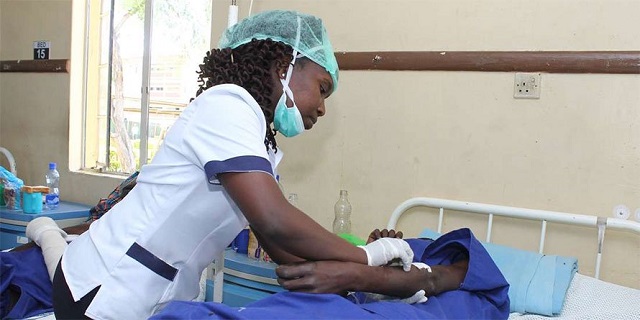
Kagadi, Uganda | THE INDEPENDENT | The Ministry of Health has confirmed the outbreak of Rift Valley fever in Kagadi district.
The case was confirmed following the death of Justus Mugisa, 34, a herdsman and a resident of Kihuura LCI in Mabaale sub-county, Kagadi district.
Mugisa died from St Ambrose Charity Health Center IV in Kagadi town on Monday this week where he had been admitted after he developed severe fever, muscle pain, and headache.
Paul Bahizi, the Kagadi District Assistant Health officer says that health officials in the district became suspicious after the death of the deceased. He says that they were compelled to collect samples from him and sent them to Uganda Virus Research Institute Entebbe for analysis which tested positive for Rift Valley fever.
Dr. Fred Ssewankambo, a representative from World Health Organization (WHO) has asked the district authority to swiftly launch sensitization campaigns, especially in Mabaale before the disease spreads.
Lillian Ruteraho, the Kagadi Resident District Commissioner says they have dispatched a team of health experts to trace for the victim’s contacts so that samples are taken from them for analysis.
She has asked residents to be vigilant and cooperate with health officials in order to help contain the outbreak of the disease from spreading to other areas.
Ruteraho adds that the National Rapid Response team from the Ministry of Health has been alerted and soon they will be sent in the district to back up medical officials in the district to handle the outbreak.
Rift Valley fever (RVF) is a viral zoonosis that primarily affects animals but also has the capacity to infect humans.
Infection can cause severe diseases in both animals and humans. The disease also results in significant economic losses due to death and abortion among RVF-infected livestock. Some of the symptoms of rift valley fever-RVF include fever, muscle pains, headaches, bleeding among others.
The virus was first identified in 1931 during an investigation into an epidemic among sheep on a farm in the Rift Valley of Kenya.
In March 2016, an outbreak of Rift Valley fever (RVF) was identified in Kabale district, southwestern Uganda.
A comprehensive outbreak investigation was initiated, including human, livestock, and mosquito vector investigations.
Overall, four cases of acute, nonfatal human disease were identified, three by RVF virus (RVFV) reverse transcriptase-polymerase chain reaction (RT-PCR), and one by IgM and IgG serology.
****
URN
 The Independent Uganda: You get the Truth we Pay the Price
The Independent Uganda: You get the Truth we Pay the Price



